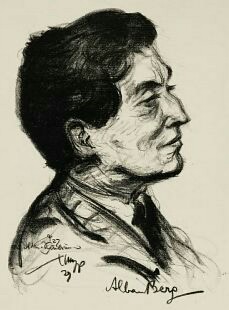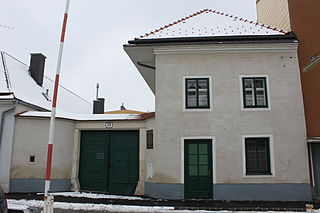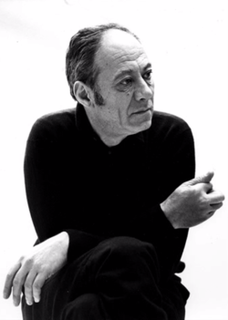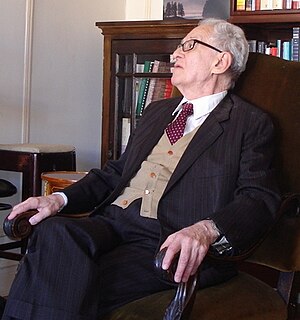
(publ. Philosophical Library, 1950)
Style and Idea: Selected Writings of Arnold Schoenberg (in German: Stil und Gedanke) is the name for a published collection of essays, articles and sketches by Arnold Schoenberg, that has appeared in various forms.

Arnold Schoenberg or Schönberg was an Austrian-born American composer, music theorist, teacher, writer, and painter. He is widely considered one of the most important and influential composers of the 20th century. He was associated with the expressionist movement in German poetry and art, and leader of the Second Viennese School. With the rise of the Nazi Party, Schoenberg's works were labeled degenerate music, because they were modernist and atonal. He emigrated to the United States in 1933.
The earliest may date to c. 1950 [1] (just before his death), edited and translated by Dika Newlin, and contains fifteen essays, published by Philosophical Library, New York:

Dika Newlin was a composer, pianist, professor, musicologist, and punk rock singer. She received a Ph.D from Columbia University at the age of 22. She was one of the last living students of Arnold Schoenberg, a Schoenberg scholar and a professor at Virginia Commonwealth University in Richmond from 1978 to 2004. She performed as an Elvis impersonator and played punk rock while in her seventies in Richmond, Virginia.
- The relationship to the text (1912)
- Gustav Mahler (1912, 1948)
- New music, outmoded music, style and idea (1946)
- Brahms the progressive (1933 radio talk, revised 1947 as an essay)
- Composition with twelve tones (1941 and c. 1948)
- A dangerous game (1944?)
- Eartraining through composing (1939)
- Heart and brain in music (1946)
- Criteria for the evaluation of music (1946)
- Folkloristic symphonies (1947)
- Human rights (1947)
- On revient toujours (1948)
- The blessing of the dressing (1948)
- This is my fault (1949)
- To the wharfs.
(Dates from the table of contents, sources and notes to the 1975 edition.) A Spanish translation was published by Taurus of Madrid in 1951. [2]
The 1975 edition [3] first published (according to an inner page) by Faber and Faber, published in the United States by Belmont Music Publishers [4] and by St. Martin's Press the same year 1975, [5] was twice as long (559 pp. as against 224 for the first version), contained 94 selections of varying lengths in 10 themed sections (including most of the above, dividing "Composition with twelve tones" into two parts) in translations by Leo Black, edited by Leonard Stein (though Dika Newlin is still credited for the translations of the twelve items above) - "A Dangerous Game" and "To the Wharfs" were dropped between versions.
Faber and Faber Limited, usually abbreviated to Faber, is an independent publishing house in London, the United Kingdom. Published authors and poets include T. S. Eliot, W.H. Auden, William Golding, Samuel Beckett, Philip Larkin, Ted Hughes, Seamus Heaney and Paul Muldoon.
St. Martin's Press is a book publisher headquartered in Manhattan, New York City. St. Martin's Press is considered one of the largest English-language publishers bringing to the public some 700 titles a year under eight imprints.
Leonard David Stein was a musicologist, pianist, conductor, university teacher, and influential in promoting contemporary music on the American West Coast. He was for years Arnold Schoenberg's assistant, music director of the Schoenberg Institute at USC, and among the foremost authorities on Schoenberg's music. He was also an influential teacher in the lives of many younger composers, such as the influential minimalist La Monte Young.
The sections of the new version are:
- Editor's preface
- Translator's preface
- Personal Evaluation and Retrospect (14 items, c. 1923–1949)
- Modern Music (10 items, 1912–1949)
- Folk-Music and Nationalism (6 items, c. 1926–1947)
- Critics and Criticism (7 items, 1909–1923)
- Twelve-Tone Composition (6 items, 1923–c. 1948)
- Theory and Composition (13 items, 1922–c. 1948)
- Performance and Notation (18 items, 1923–1948)
- Teaching (8 items, 1911–1950)
- Composers (15 items, 1911–1951)
- Social and Political Matters (1912–1950)
- Sources and Notes
- Appendices
- Index
The Philosophical Library reprinted the 14-item 1950 edition in 2010. [6]









